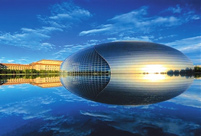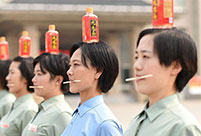

Born in 1930 in Ningbo, China, medical scientist and pharmaceutical chemist Tu YouYou’s name is globally known after the announcement of her deserved 2015 Nobel Prize in Physiology or Medicine.
Controversies soon raised, some questioned her eligibility due to the lack of a doctor’s degree and sufficient experience overseas, while others pointed that she was not a member of the Chinese Academy of Sciences (CAS). Known for responding with nothing but the significance of her hard work, Tu, so far, had remained silent to all the sayings.
Widely known as the fact, Tu was inspired from the extraction method used in ancient Chinese medicine, and made the first discovery in malaria-parasite inhibiting substance- the Artemisia annual efficient ingredient. From that point on, her achievements snowballs; the million-lives-saving significance of anti-malarial drug artemisinin, its deserved Lasker Award in 2011, as well as the just announced Nobel Prize… though all the accomplishments were a mere representation of her decades-long practice.
Tu’s journey of malaria studies began as early as May, 1969. It was during time of China’s Cultural Evolution, China’s ally North Vietnam was at war with South Vietnam. The U.S. malaria was a major threat to the soldiers, as well as many of China’s southern provinces. Tu, then 38 years old, was assigned to a secret drug discovery mission coded ‘523’ to aid the death-causing disease at the war front. As a graduate from Beijing Medical College of Pharmacy with years of experience researching Chinese and Western medicine, Tu was appointed as head of the project responsible for finding a herbal cure of malaria.
After collecting over 2000 candidate herbal recipes ranging from plants, animals, and minerals, and reviewing ancient texts, Tu and her team discovered Artemisia annua extract as a suppressant in related virus growth in animals. Though the non-resting work did not pay satisfactory result; the low inhibition effect rate led the team back to hard work.
After repeated tests, Tu found a low-boiling extracting method to which the hear damage of drug potency could be avoided. She thus enlightened the isolation of the pure substance (now known as artemisinin) to have a surprising 100% inhibition rate, which later served its significance of saving millions of lives. Tu’s work, however, was not eligible of a status report in that particular era.
Being a scientist in the 1960s and 70s was difficult. According to Mao’s theory, scientists were one of the nine black categories at the time. Under such a condition where the publication of her individual accomplishments as a scientist was at great political risk, Tu chose to carry on her work, her findings gained respect amongst malaria endemic areas, and set off a national upsurge of Artemisia annula malaria research.
Tu continued to study the chemical structure and pharmacology of the active ingredient of Artemisia annua- artemisinin, in the meantime the extraction work of antimalarial mechanism was widespread across China under her influence, benefiting patients around the world.
 Top 10 nominated designs at BJDW
Top 10 nominated designs at BJDW Fashion show staged in Forbidden City at night
Fashion show staged in Forbidden City at night Construction of HK-Zhuhai-Macao Bridge enters final stage
Construction of HK-Zhuhai-Macao Bridge enters final stage Model of heavy-lift copter makes debuts at Tianjin expo
Model of heavy-lift copter makes debuts at Tianjin expo Art photos of Chinese beauty in Han Chinese clothing
Art photos of Chinese beauty in Han Chinese clothing Stunning photos of air show in China’s V-Day parade
Stunning photos of air show in China’s V-Day parade Models change clothes on street in Hangzhou
Models change clothes on street in Hangzhou Charming Chinese female soldiers
Charming Chinese female soldiers Beauty vs. muscular man
Beauty vs. muscular man Rising to the challenge
Rising to the challenge Rand report echoes Cold War mind-set, overstates threats
Rand report echoes Cold War mind-set, overstates threats Inland nuke plants crucial to energy future
Inland nuke plants crucial to energy future Communist confrontation
Communist confrontationDay|Week